Coffee bean spider Steatoda bipunctata
This is a very large family with over 300 described species in Europe. The presence of these spiders which live on dry rocky walls or walls of house, sheds et cetera, is given away by their non-sticking, three-dimensional, often tangled and grubby webs. The spider hides in the dark or debris-covered silken retreat. Some theridiids make a simple H-type or single line web and some even make no web at all. Theridiidae are often referred as "the comb-footed spider" due to the presence of serrated bristles on their fourth leg-pair with which they comb their silken threads to make it woolly wherein insects gets tangled.
The "black widow" spider also belongs to this family. The species occurring in Europe are not dangerous for man but her bite is comparable with a bee sting. More about Latrodectus venomity here <--
Coffee bean spider Steatoda bipunctata
Genus Asagena
The spider measures between 3 and 5 mm and can be found thought all of Europe at ground level on dry grassland.
Asagena phalerata is often seen between ants and even inside ant nests.
The spiders feeds on ants.
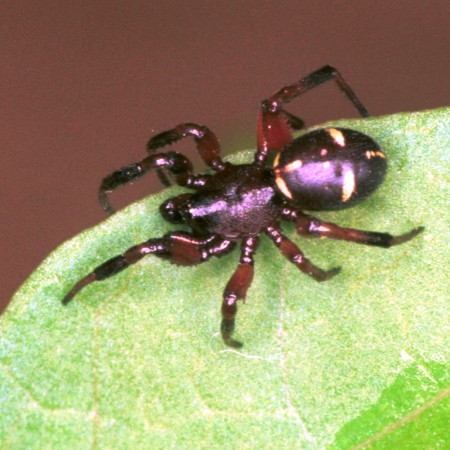 |
|
| Asagena phalerata | Asagena phalerata |
Genus Crustulina
Two species with a size between 1.5 and 2.5 mm can be found in these regions. Both have tiny warty granulation on the cephalothorax (head-breast part)
they make insignificant webs in low vegetation. The egg-sac is white and spherical and often guarded by the female. Male and female are similar in appearance.
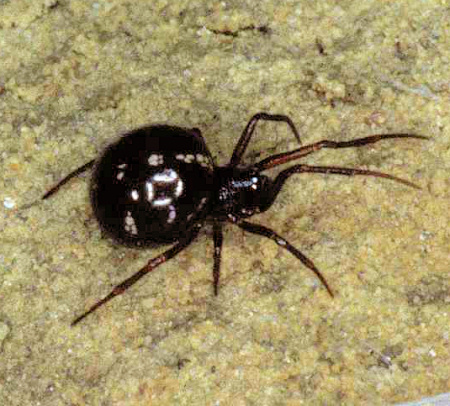 |
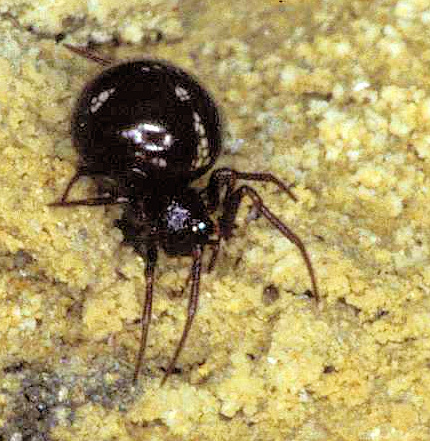 |
| Crustulina guttata | Crustulina guttata |
Genus Enoplognatha
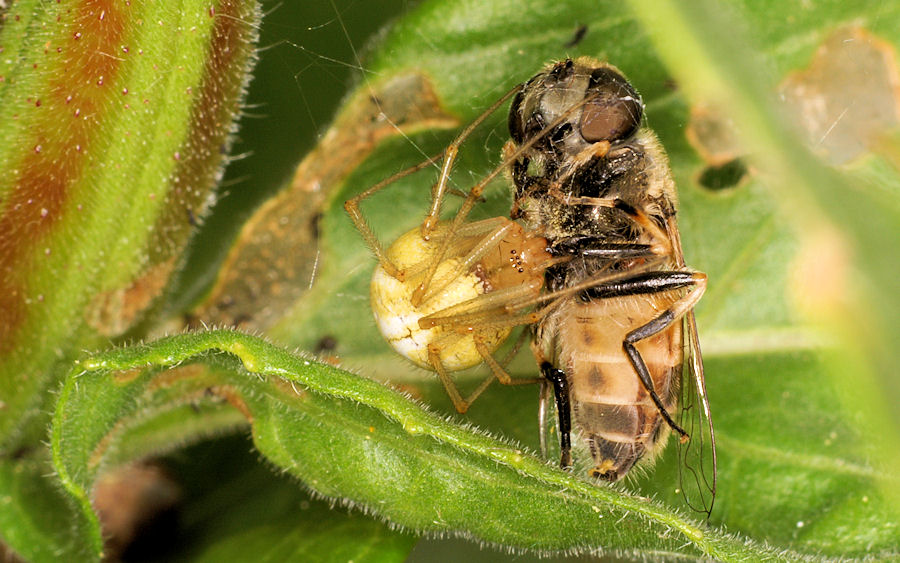 |
||
Enoplognatha ovata can be very variable in color. The spider can be found on low vegetation and bushes. The female makes a bluish egg-sac. The leaf in which she makes here egg sac is often slightly rolled. Enoplognatha ovata is very similar to Enoplognatha latimana. |
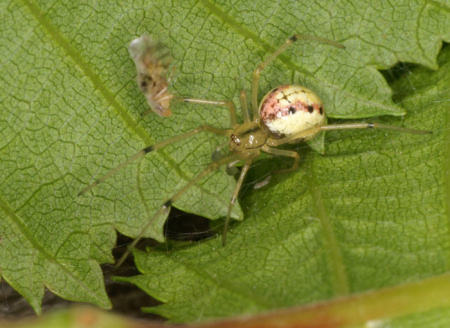 |
|
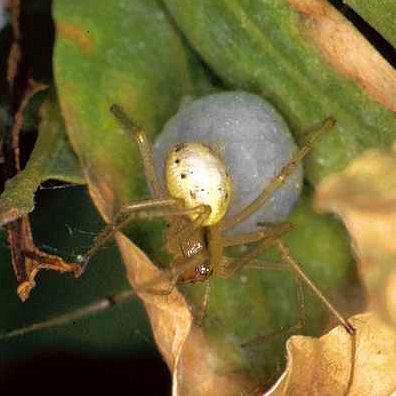 |
 |
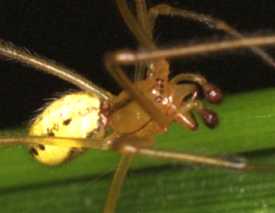 |
| Enoplognatha ovata with egg sac | Enoplognatha ovata | Enoplognatha ovata |
 |
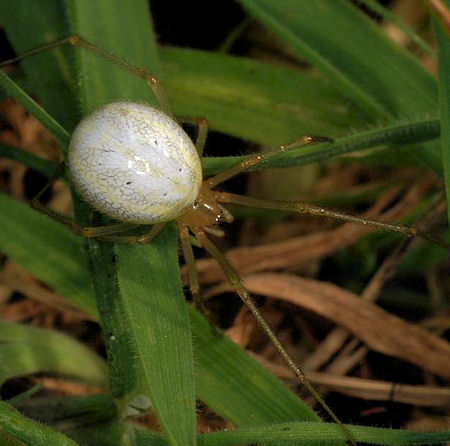 |
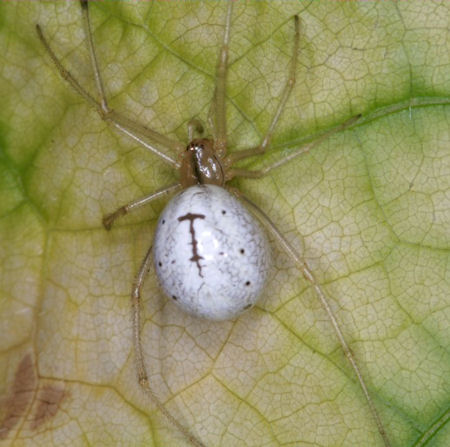 |
|
Enoplognatha ovata |
|
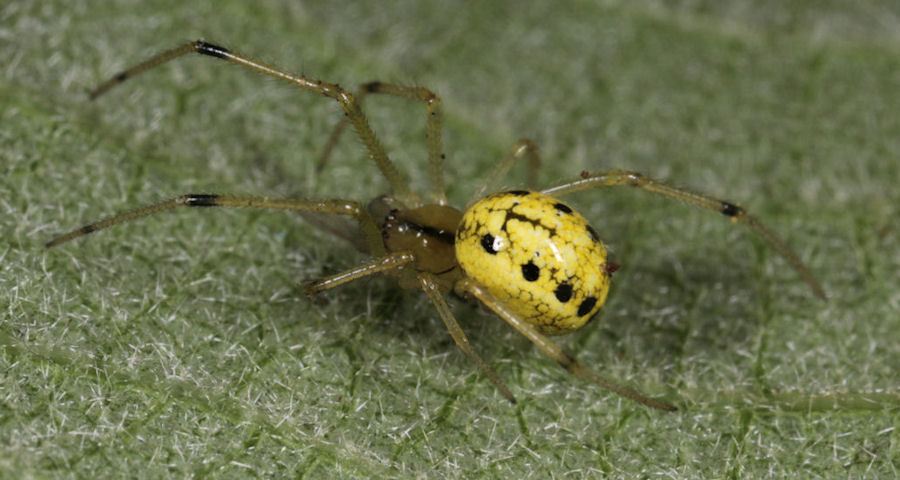 |
|
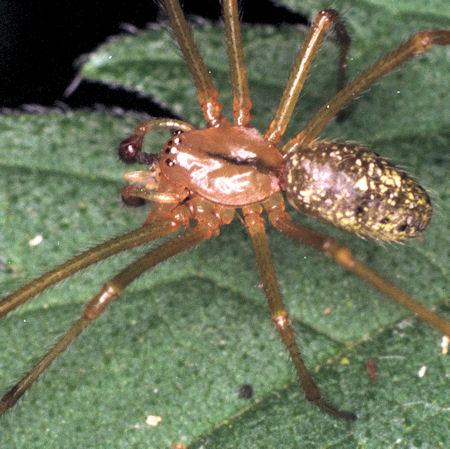 |
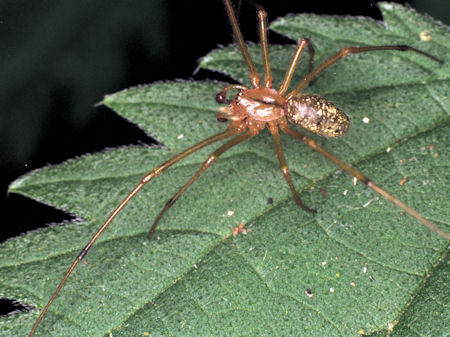 |
| Enoplognatha mordax? | Enoplognatha mordax? |
Genus Episinus
This spider does not look like a Theridiid spider with its long and slender appearance. Its size is about 5 mm and she can be found at ground level between low vegetation. Three species can be found in Europe and all are of the same general appearance. Male and female are similar in appearance except for the male's slimmer abdomen. Courtship takes place in summer and is brief. The egg-sac is white and spherical and has coarse loop of silk around it. These spiders make very simple H or Y-shaped web near ground level. The sticky ends of the threads are attached to the ground and plants above the spider and are held by the spider.
|
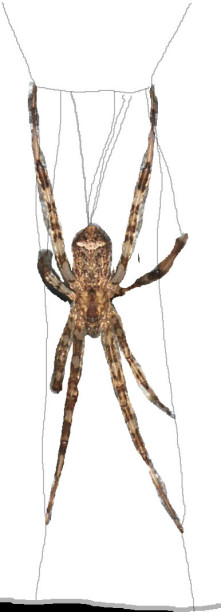 |
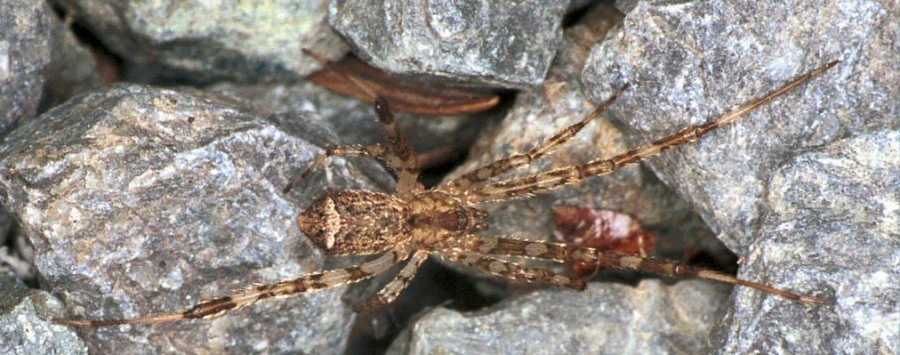 |
|
| Episinus maculipes | |
Genus Lasaeola
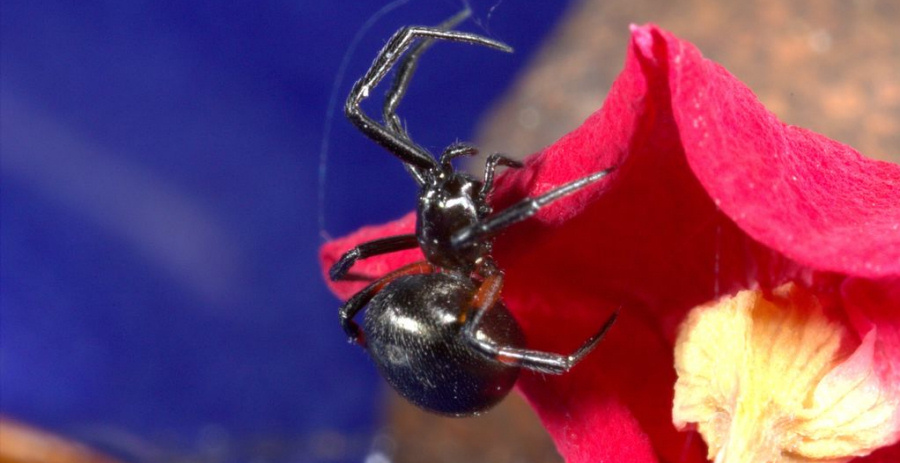 |
|
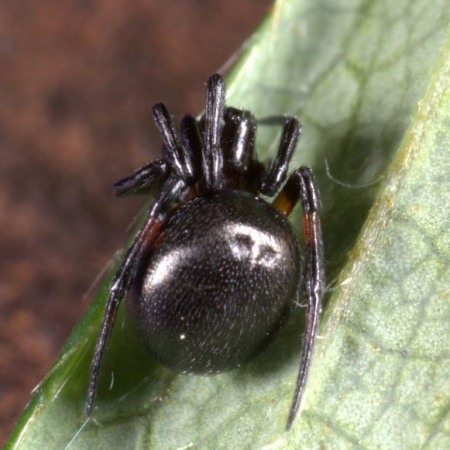 |
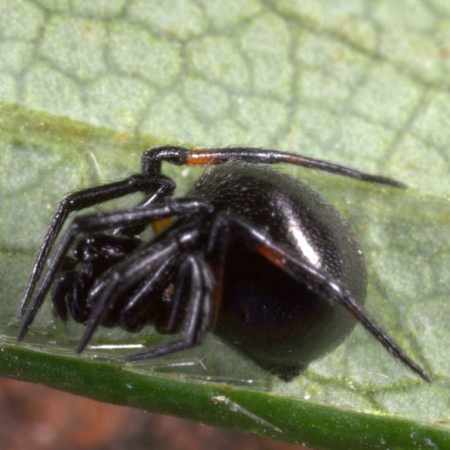 |
| Lasaeola tristis | Lasaeola tristis |
Genus Latrodectus
 Latrodectus elegans (Photo Freek Beijdorff, Thailand) |
|
Latrodectus builds her web in dark places near the ground, preferring the sheltered sides of buildings, abandoned rodent holes, or openings in stone outcroppings. She seldom ventures indoors, but anyone living in black widow territory should be aware that she sometimes makes a home in outbuildings such as woodsheds or outdoor toilets. The web is easily recognized by its tangled appearance, and a series of vertical trap threads extending to the ground. The web silk is extremely strong. Crawling insects getting stuck on the sticky threads are quickly lifted into the web where they're wrapped in layers of silk, injected with venom, and sucked dry. She lays 50 - 200 eggs usually in 4 or 5 egg-sacs. Female mature over a period of 4-8 month and males in a 2-3 month period. The female can live up to three years and males only 6 months. After 14 days the spiderlings emerges from the eggs. This emerging is often correlated on the onset of rain when temperatures are low and humidity high. These spiders are cannibalistic and. The spider leaves the web by a process known as "ballooning". A thread line of silk is released until the drag of the air is strong enough to lift the young spider in the air. In Europe we can encounter Latrodectus tredecimguttatus. |
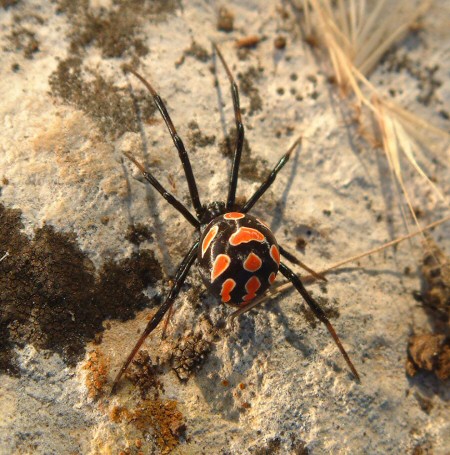 |
| Latrodectus tredecimguttatus female (picture from wikipedia) | |
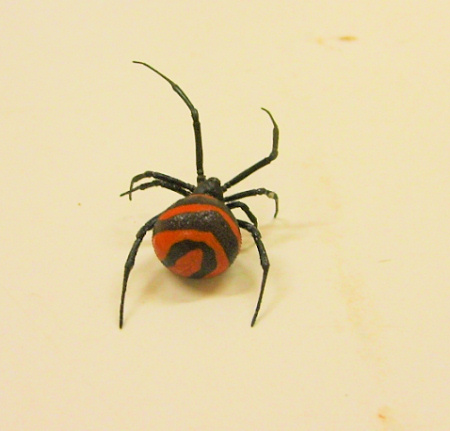 |
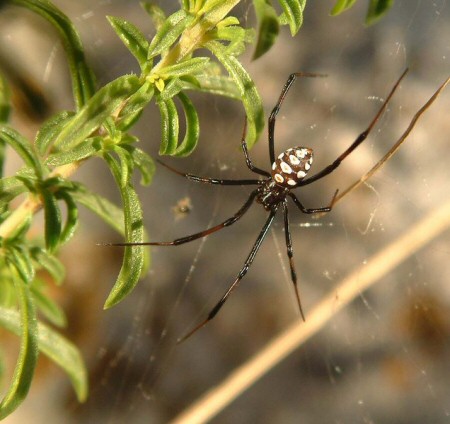 |
| Latrodectus from Congo by Stefaan Vinckevleugel | Latrodectus tredecimguttatus male (picture from wikipedia) |
Australian Black widow or red back. See more here |
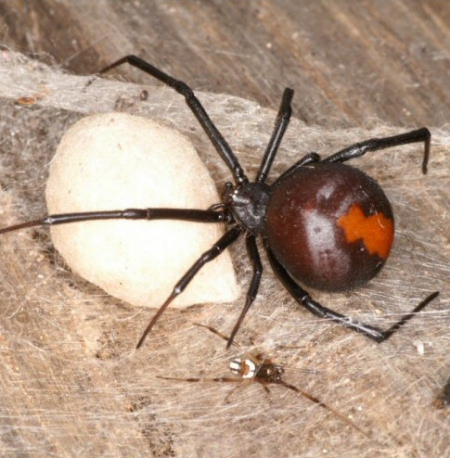 |
| Latrodectus hasselti female | Latrodectus hasselti female with her much smaller male |
Genus Neottiura
These spiders can be found in summer on low vegetation and bushes. Males and females are similar in appearance. Their size is around 3 mm. |
|
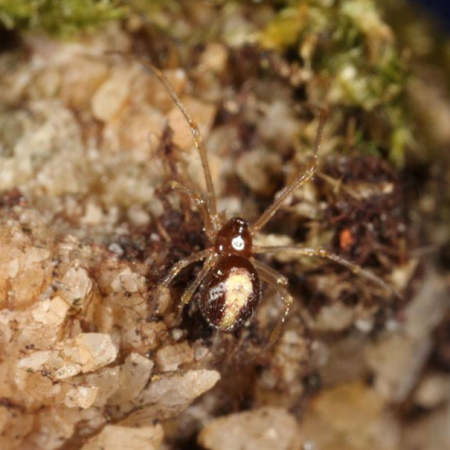 |
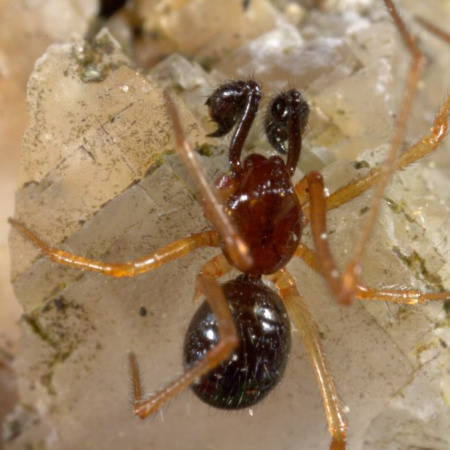 |
| Neottiura bimaculata female | Neottiura bimaculata male |
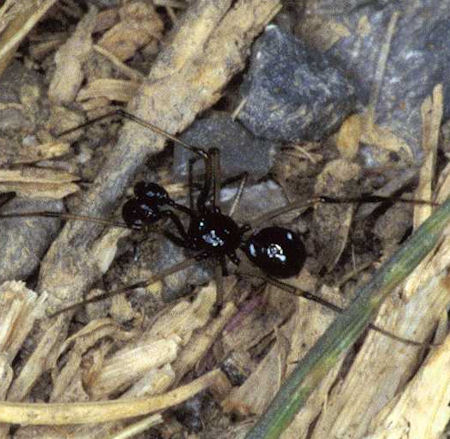 |
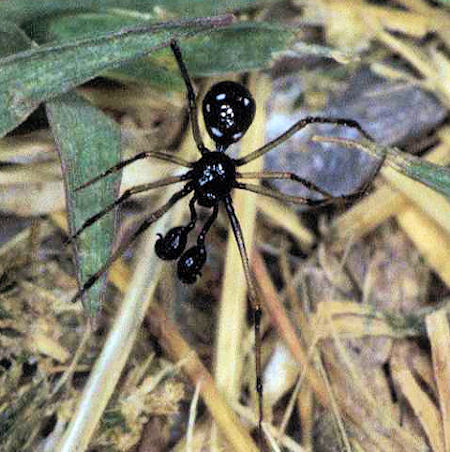 |
| Neottiura uncinata | Neottiura uncinata Note her long palps |
Genus Paidiscura
There are two European species. Theridon pallens was moved to this genus. These spider are a few mm large
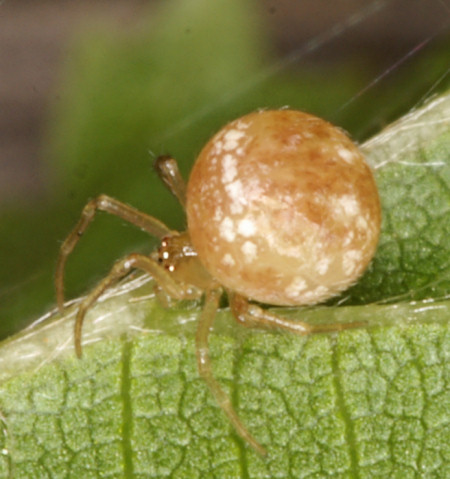 |
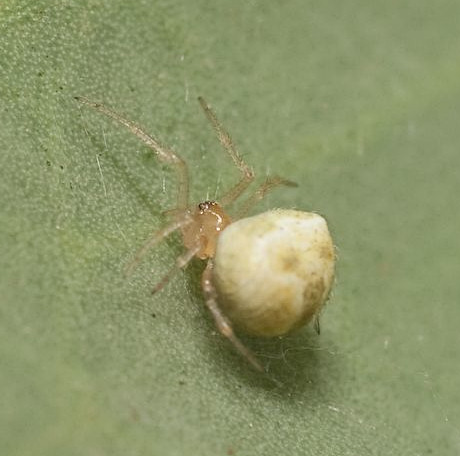 |
| Paidiscura pallens | Paidiscura orotavensis by Gustavo Peña Tejera |
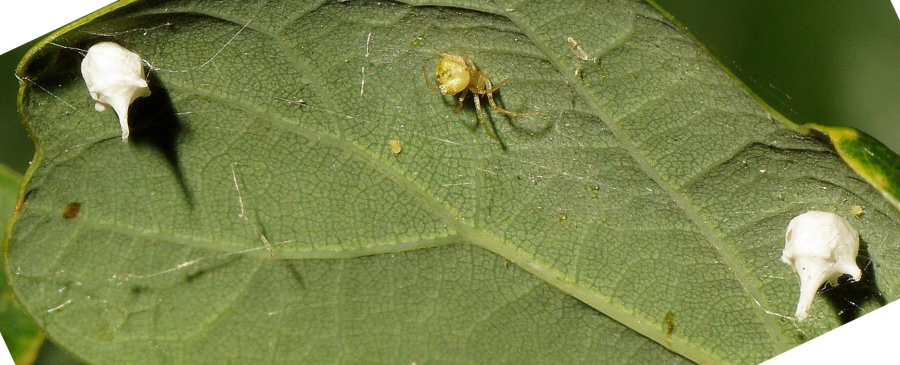 |
|
| Paidiscura pallens with egg-sacs Photo Hans Jonkman | |
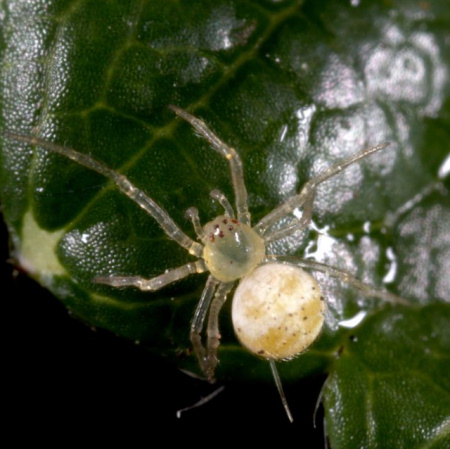 |
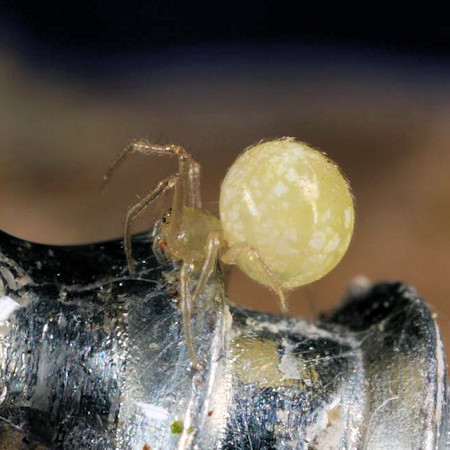 |
| Paidiscura pallens | Paidiscura pallens |
Genus Parasteatoda
| Six species occur in Europe. Their size varies between 3 and 7 mm. This genus can be easily recognized by its abdomen. When viewed from the side, it is much higher than wide. From above, the abdomen is almost circular. There is a great variety in color in a species. Egg-sacs are generally brown paperly silk. Their retreat is an inverted cone formed with a leaf which hangs in the middle of the web. This retreat also acts as a protection and shelter from the rain. In the web is often a certain amount of debris and wrapped insects. Parasteatoda tepidariorum, a world-wide succesfull species, often build webs on dry walls of buildings. |
|
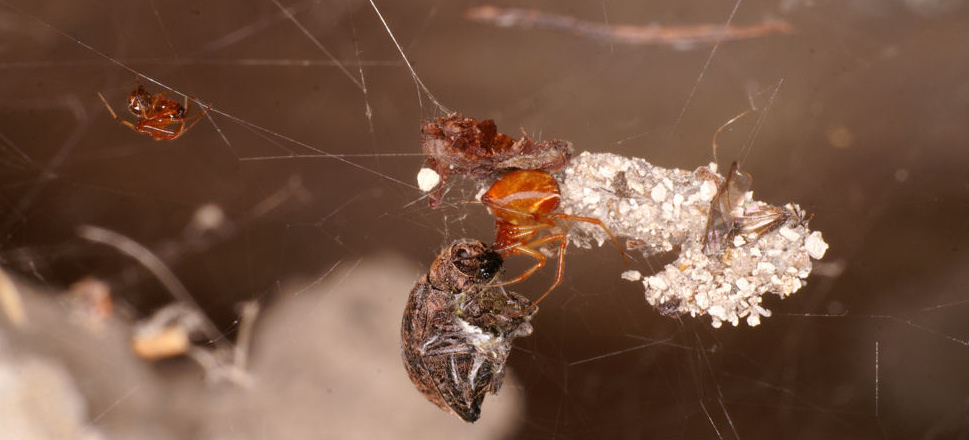 |
|
| Parasteatoda lunata male and female in web | |
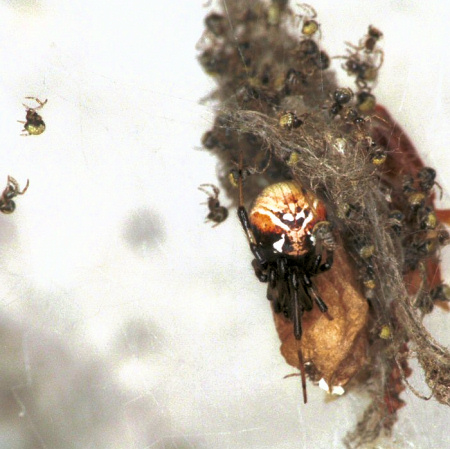 |
 |
| Parasteatoda lunata with youngsters | Parasteatoda lunata male |
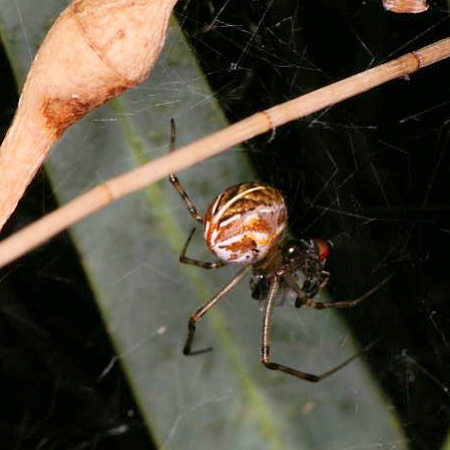 |
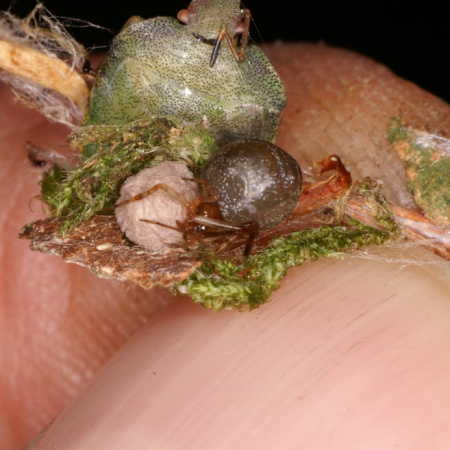 |
| Parasteatoda lunata | Parasteatoda simulans |
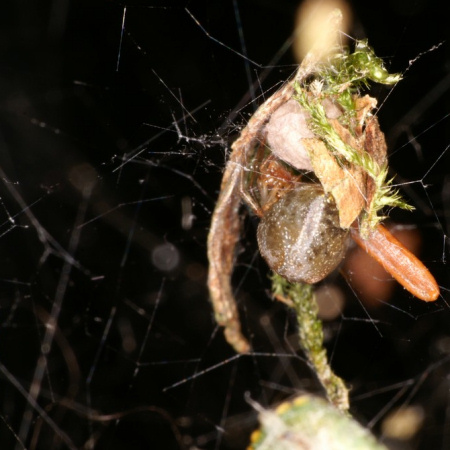 |
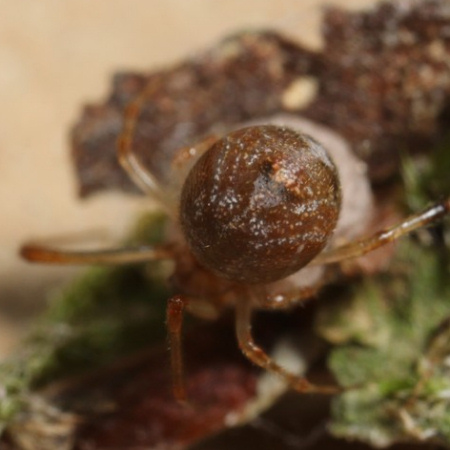 |
| Parasteatoda simulans | Parasteatoda simulans |
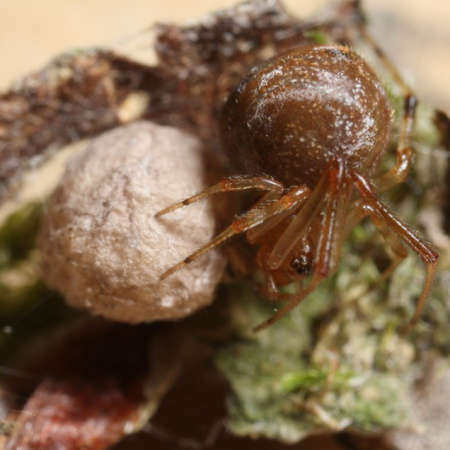 |
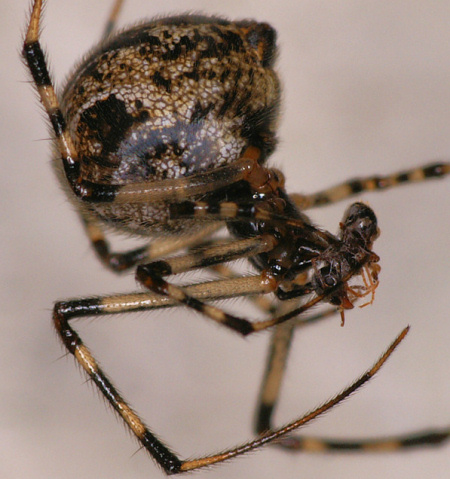 |
| Parasteatoda simulans | Parasteatoda tepidariorum with ant |
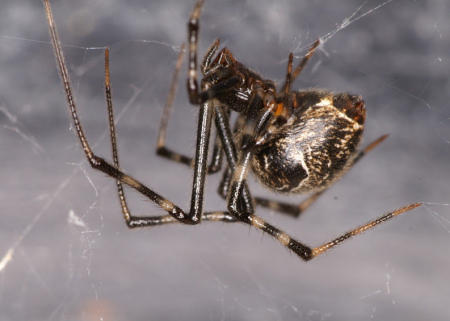 |
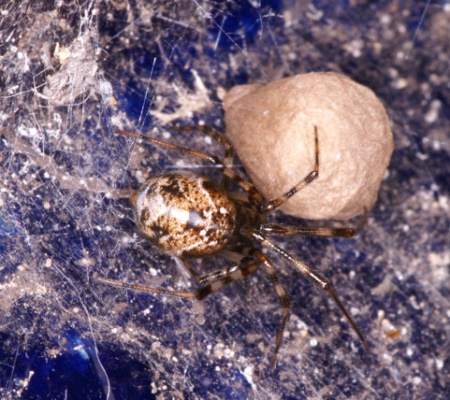 |
| Parasteatoda tepidariorum | Parasteatoda tepidariorum with egg-cocoon |
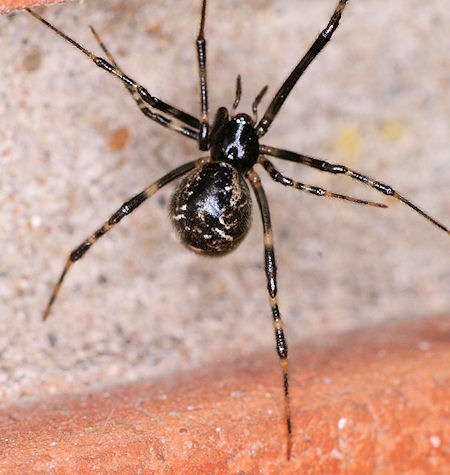 |
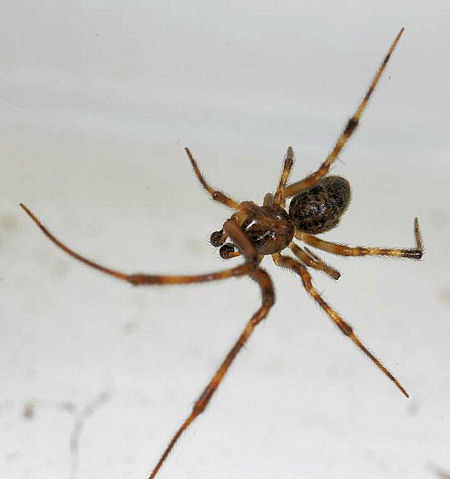 |
| Parasteatoda tepidariorum | Parasteatoda tepidariorum male |
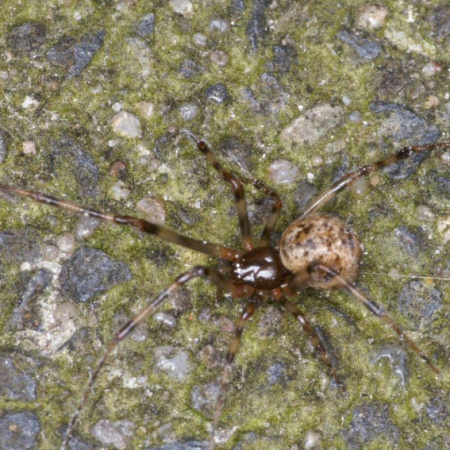 |
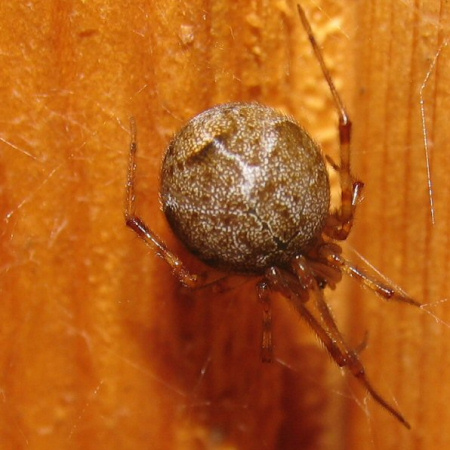 |
| Parasteatoda tepidariorum | Parasteatoda tepidariorum Peter Bijkerk, Heiloo |
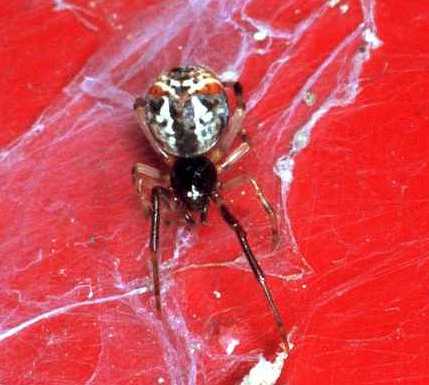 |
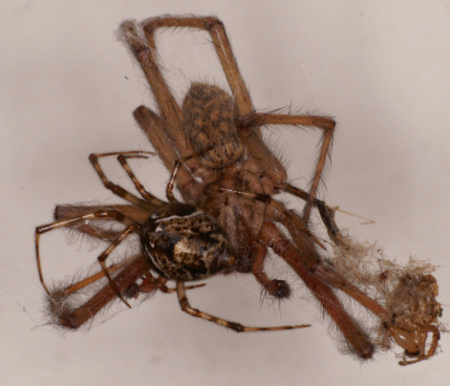 |
| Achaeranea ZZ169 | Parasteatoda tepidariorum with house spider Tegenaria sp. |
Genus Phylloneta
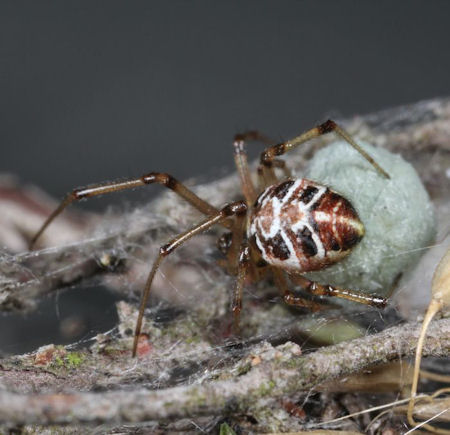 |
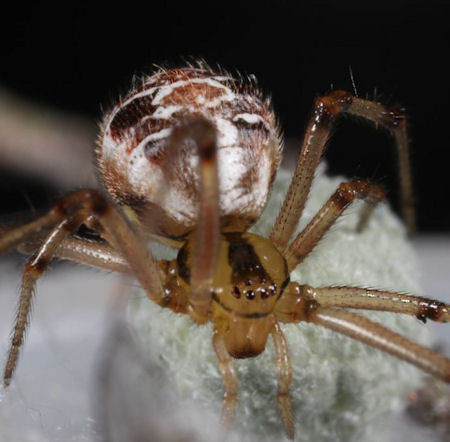 |
| Phylloneta impressa | Phylloneta impressa was Theridion impressum |
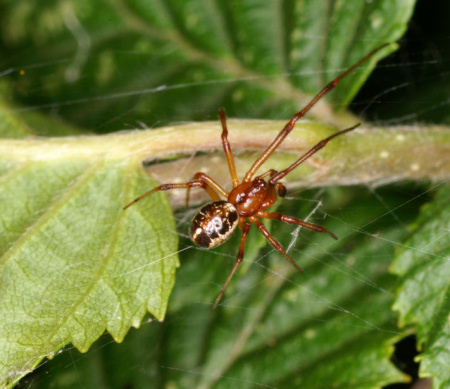 |
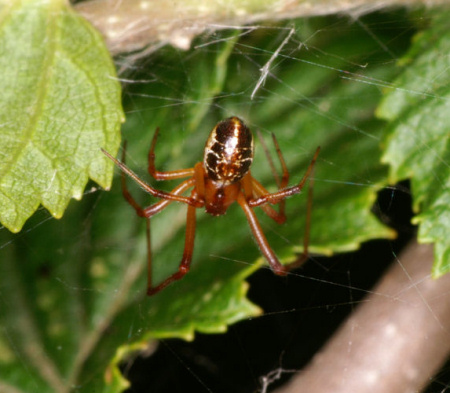 |
| Phylloneta sisyphium was Theridion sisyphium | Phylloneta sisyphium was Theridion sisyphium |
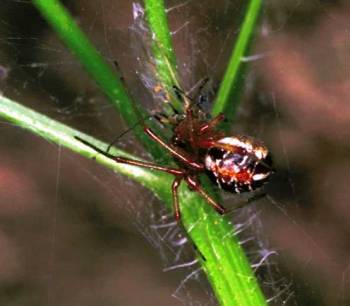 |
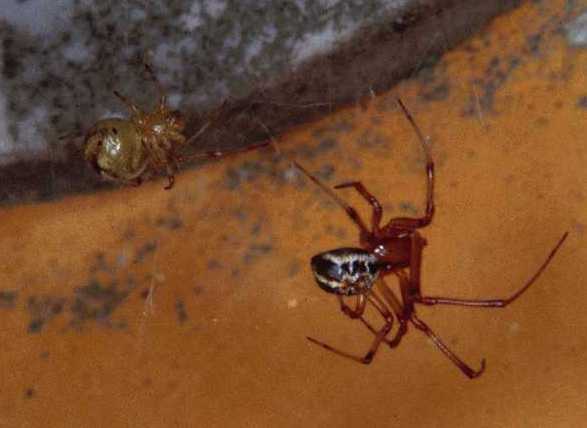 |
| Phylloneta sisyphium was Theridion sisyphium | Phylloneta sisyphium was Theridion sisyphium |
Genus Platnickina (was genus Keijia)
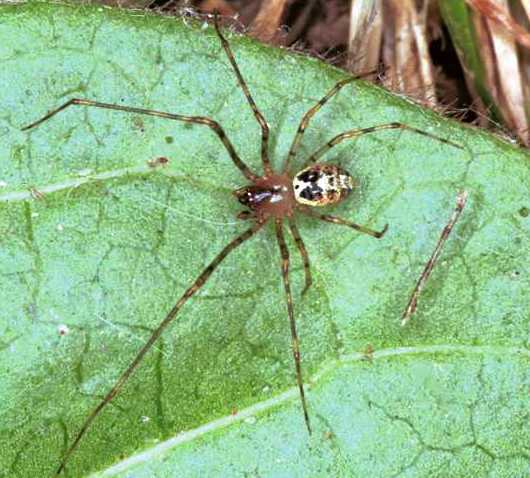 |
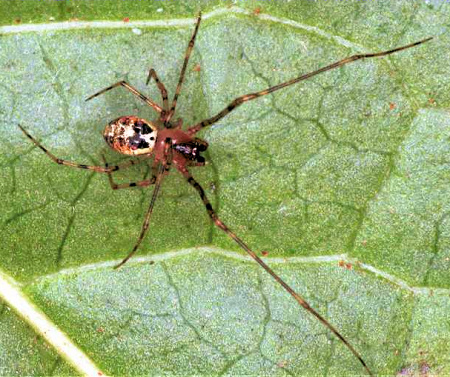 |
| Platnickina tinctum (was Keijia tinctum and before Theridion tinctum ) | |
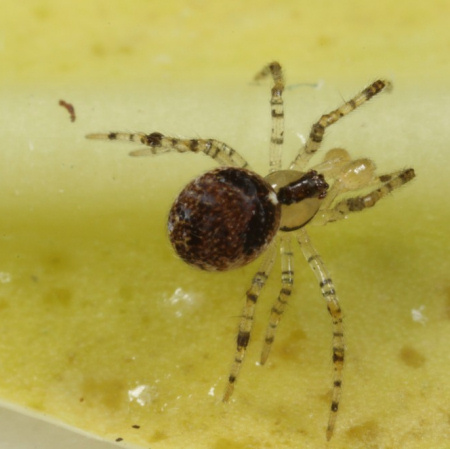 |
|
| Platnickina tinctum male |
Genus Selimus (was genus Anelosimus)
Three species occur in NW-Europe. They can be distinguished by a dark median band across the abdomen. The spiders are about 3 mm long and can be found on bushes and trees.
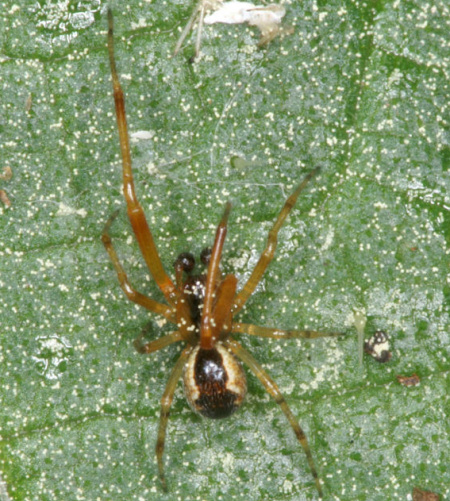 |
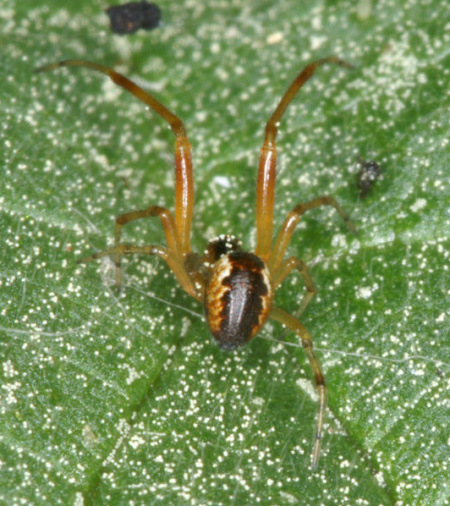 |
| Selimus vittatatus was Anelosimus vittatatus | Selimus vittatatus |
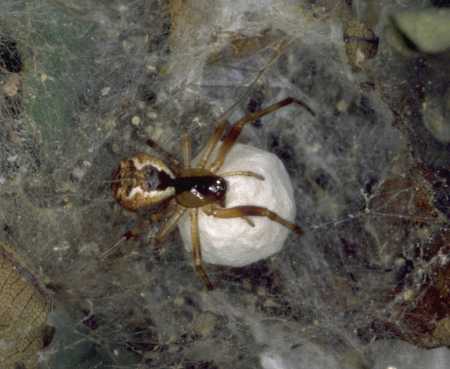 |
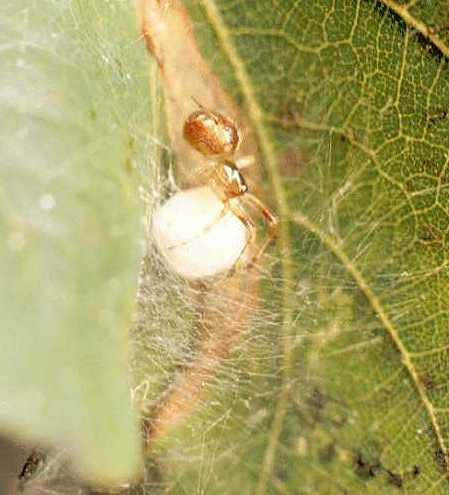 |
| Selimus vittatatus | Selimus vittatatus |
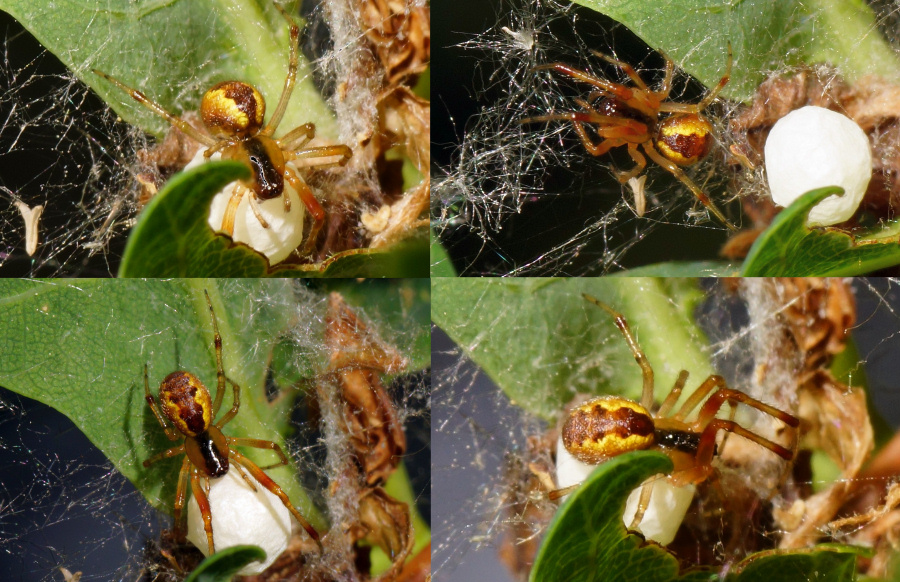 |
|
| Selimus vittatatus Photo Hans Jonkman | |
Genus Steatoda
Eight species are known in NW-Europe. They have a robust appearance. There is always a narrow band around the front of the abdomen.
Steatoda bipunctata, the coffee bean spider, is one of the most common spiders in buildings and homes. Its size is between 4 - 7 mm.
|
|
|
|
Steatoda bipunctata female |
Steatoda bipunctata male |
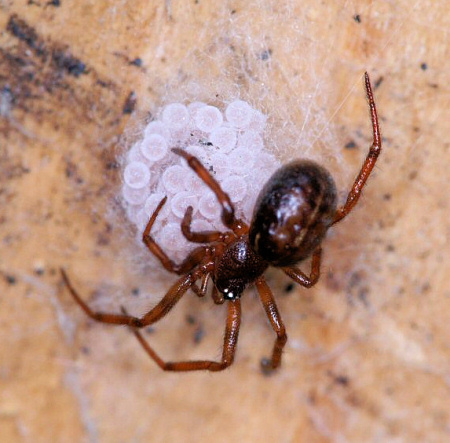 |
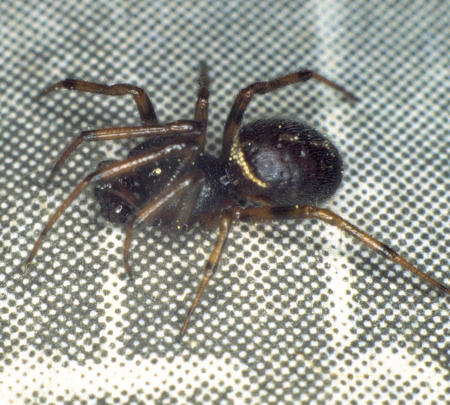 |
| Steatoda bipunctata female with her eggs | Steatoda bipunctata male on a newspaper picture |
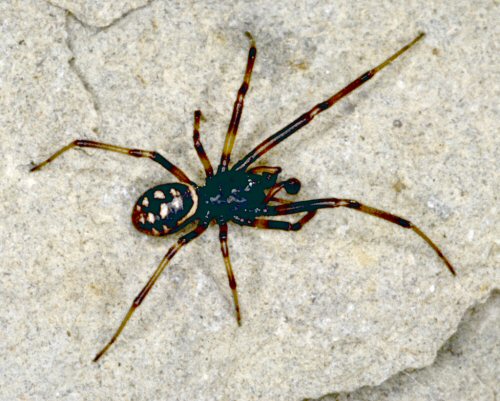 |
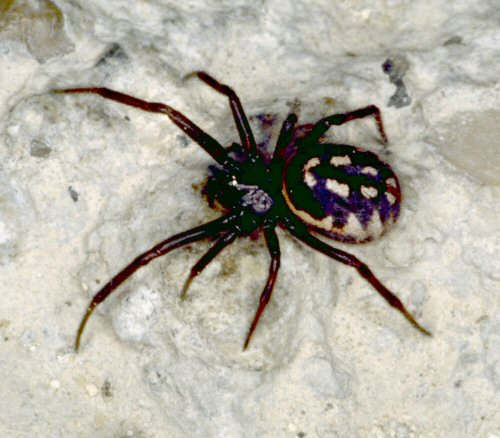 |
| Steatoda albomaculata male | Steatoda albomaculata female |
 |
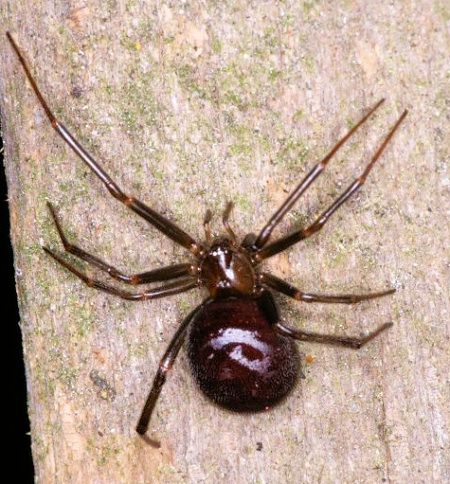 |
| Steatoda grossa with fly | Steatoda grossa variant with almost black abdomen |
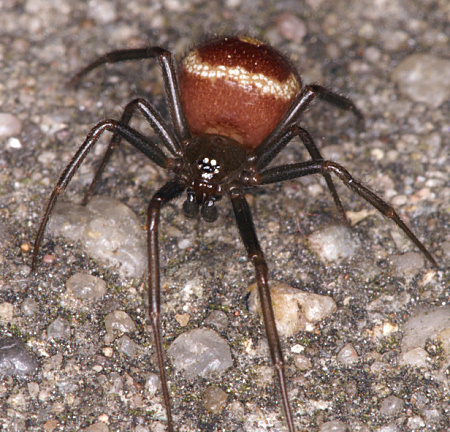 |
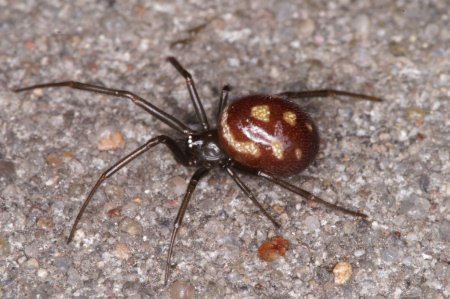 |
| Steatoda grossa | Steatoda grossa |
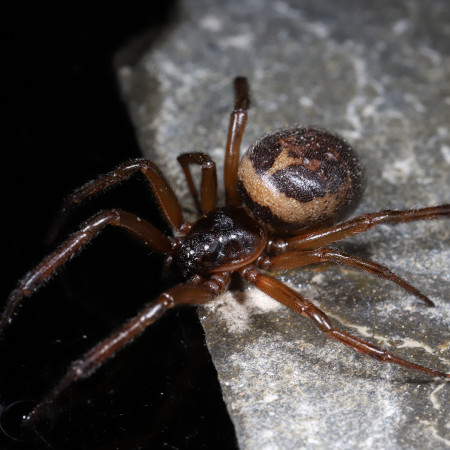 |
 |
| Steatoda nobilis | Steatoda nobilis |
 |
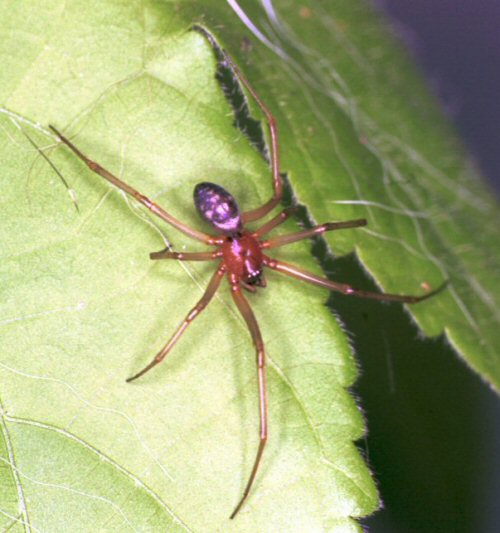 |
| Asagena phalerata was Steatoda phalerata | Steatoda grossa |
 |
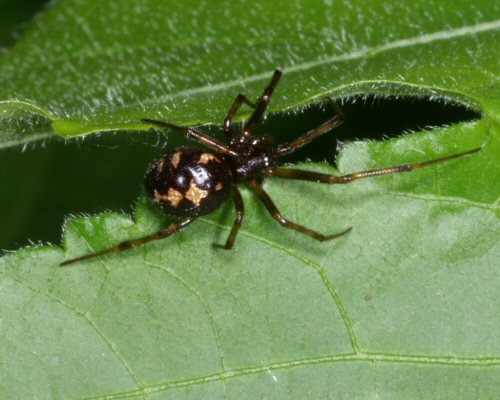 |
| Steatoda triangulosa | Steatoda triangulosa |
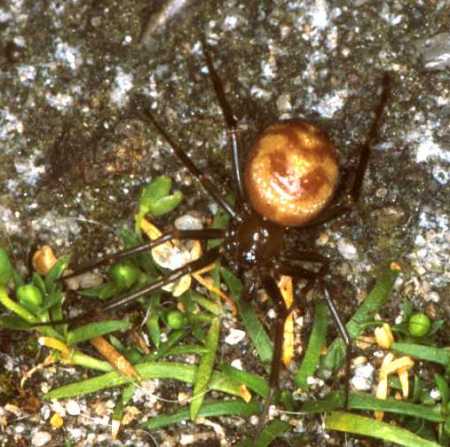 |
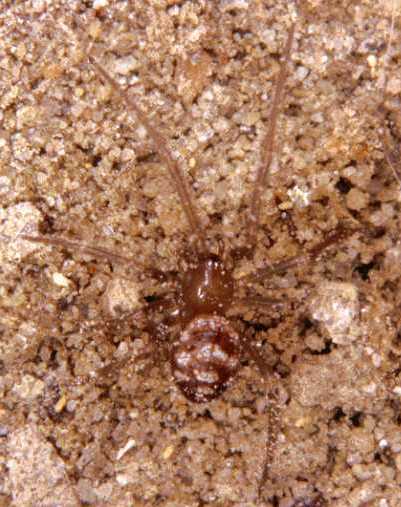 |
| Steatoda? ZZ171 | Steatoda? ZZ172 |
 |
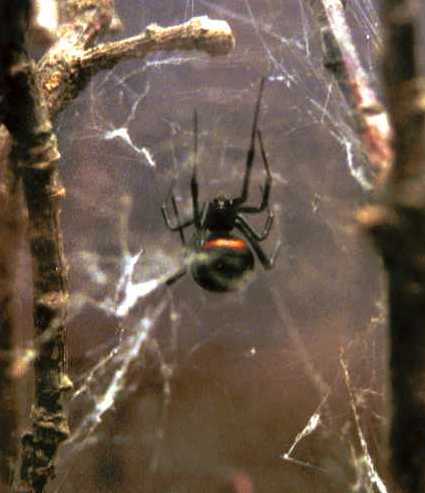 |
| Steatoda ? | Steatoda paykulliana, often misidentified as a Latrodectus tredecimguttatus or Black Widow. Photographed in an insectarium where she was put in a plastic box that was placed in a cage of glass. |
Seventy species can be found in this region. Their size varies between 2
and 5 mm.
This species spins webs of criss-cross strands on bushes and trees. The majority
of the species guard their egg-sac and some may carry it around attached to
their spinners.
 |
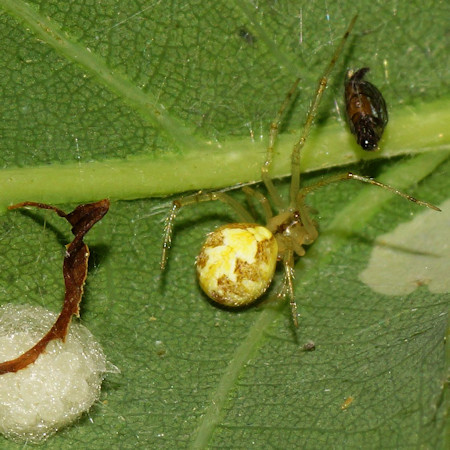 |
| Theridon varians | Theridon varians by Hans Jonkman |
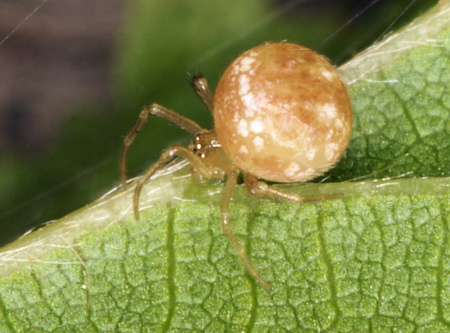 |
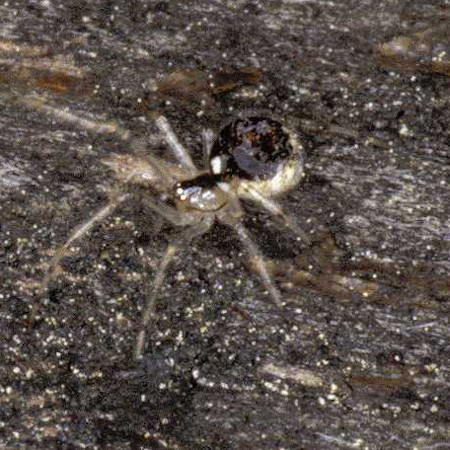 |
| Theridion pallens female. See new name: Paidiscura pallens | Theridion pallens male New name: Paidiscura pallens |
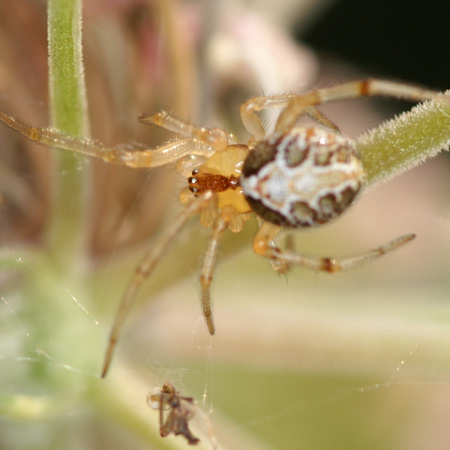 |
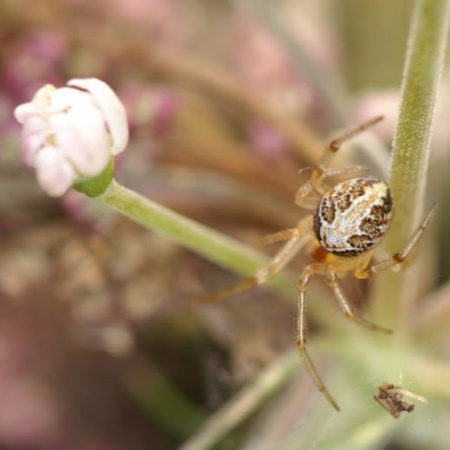 |
| Theridion pictum | Theridion pictum |
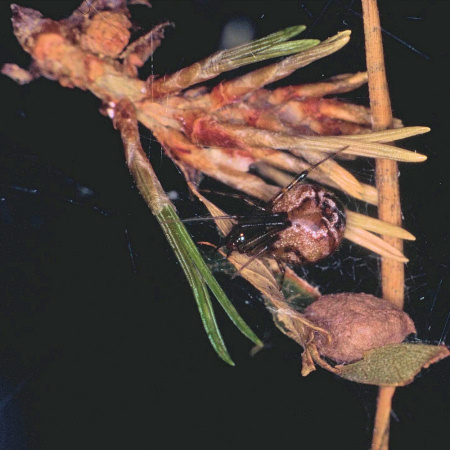 |
 |
| Theridion pictum | Theridon melanurium |
Ed Nieuwenhuys, 16 august 2020
1 april 2019, 23 december 2017, 15 june 2016, 6 november 2012 , 2 july 2011,
30 april 2010 ,
29 september 2009,
22 December 2008, 1 oktober 2006, 10 august 2006, 19 february 2006, 3 May 2005, April 14, 2002